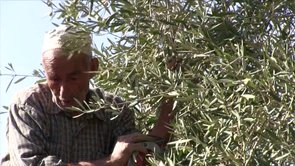Tag: Bulldozers
-
Video: The olive harvest in the Gaza Strip, 2013
16th October 2013 | International Solidarity Movement, Gal·la | Gaza, Occupied Palestine Palestinians in the Gaza Strip harvest olives during the month of October. Several years ago, a large amount of land was planted with olive trees. They were completely destroyed by Israeli bulldozers, and Palestinians were prevented from replanting them by the so-called “green line.” Today…
-
Israel starts illegal construction, destroying field of olive trees on private Palestinian land near village of Immatin
17th August 2013 | International Solidarity Movement, Nablus Team | Immatin, Occupied Palestine Immatin is a village situated in close proximity to the annexation wall and flanked by the illegal settlements of Qedumim, Gilad and Immanu’el. Recently, three brothers from the village went to work on their land. However, when they arrived, they found that…
-
Land grab in Qaryut; residents fear illegal settlement expansion
16th July 2013 | International Solidarity Movement, Nablus Team | Qaryut, Occupied Palestine On the 3rd of July 2013, settlers from the illegal colony of Shilo bulldozed land belonging to Qaryut, destroying around two hundred recently planted olive trees. Citizens of Qaryut are now concerned that new houses for the illegal settlement are being built…


